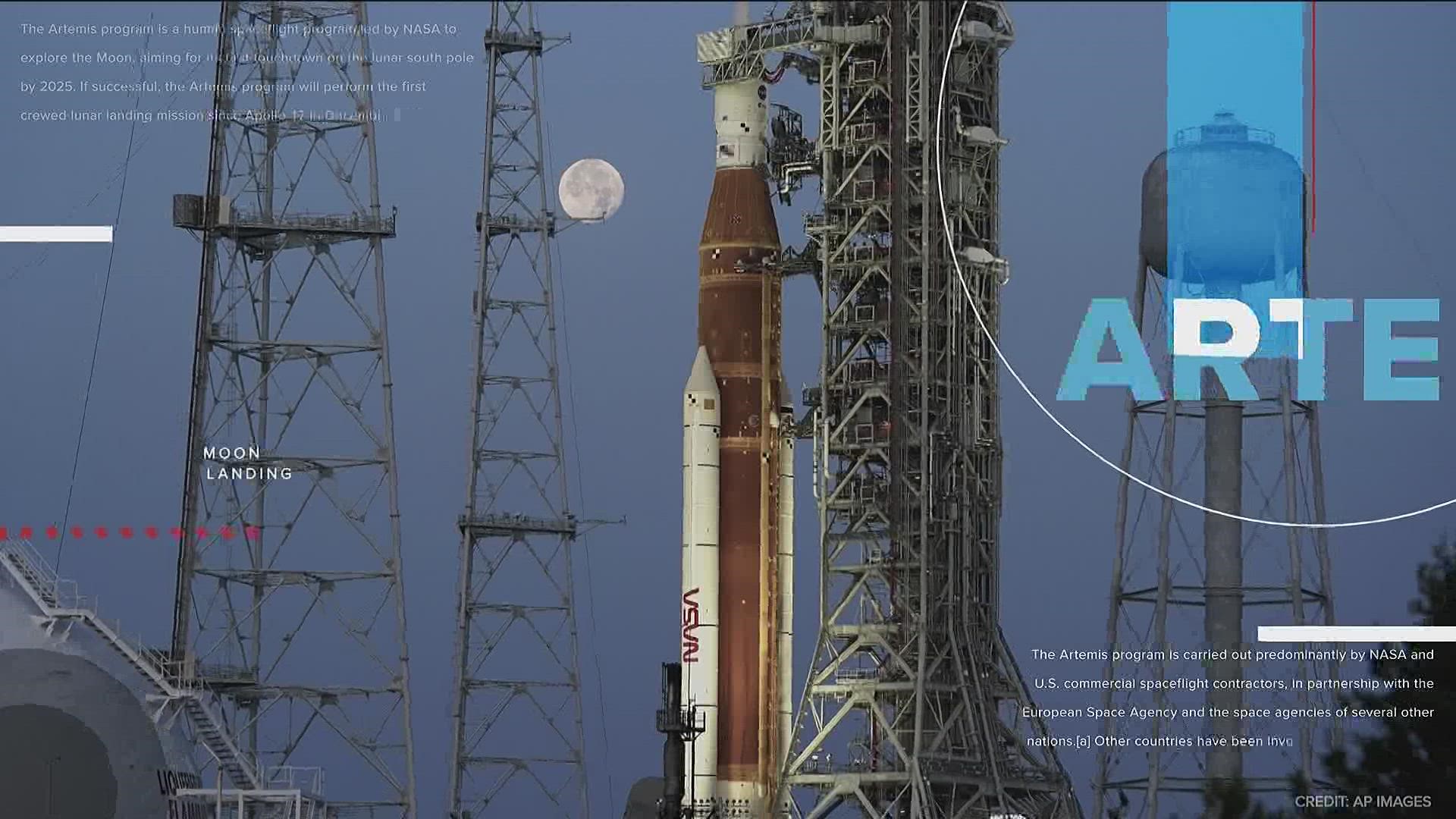ATLANTA — In a historic early Wednesday morning liftoff, the rocket named after Apollo's mythological twin sister launched NASA's 21st century-exploration program.
Despite flying without astronauts for its first test mission, those back on Earth -- including a professor at Georgia Tech -- will take what is learned from the rocket and gather data to be able to put astronauts back on the moon in the not-too-distant future.
It has been 50 years since NASA astronauts last explored the moon -- all the way back in 1972. For now, the $4.1 billion test flight is set to last 25 days and NASA intents to push the spacecraft to its limits in order to uncover any problems the flight may have faced before proceeding with real people on board.


Impacts will still be felt back in the U.S., as Georgia Tech professor Thomas Orlando compared the Artemis launch to the Apollo missions of the 1960s and 1970s and help usher in significant changes in regard to technology that we use in our everyday lives.
"New materials can be made under reduced gravity," Orlando said. "There are new drugs that can be developed, there are many things that can be new that are going to be probably available in the not-too-distant future because of our steps forward."
Although there aren't real astronauts aboard Artemis I, there are test dummies that NASA calls "moonkins." They are fitted with censors to measure vibration acceleration and cosmic radiation. Orlando said that the data that comes back from the suits will be used to finetune the ones that men and women will wear in future lunar voyages.


"The intention for Artemis is to have a long-term presence, a long-term sustainable presence of the astronauts on the moon," he said. "So they need to be in spacesuits which are their protective barriers, particularly when they are outside doing extravehicular activities."
The Orion crew module is expected to splash down in the Pacific on Dec. 11 if all goes well.
In exciting news, NASA hopes to send four astronauts around the moon on its next flight in 2024 before landing humans back on the moon as early as 2025.
Check out new photos the Artemis I mission has captured of the moon, roughly 80 miles above its surface:

